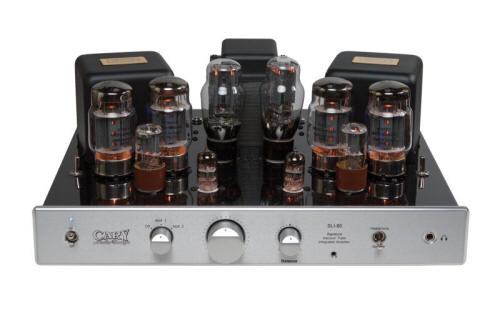Moon Neo Series 430 HAD Reference Headphone Amplifier
With optional DSD/32-Bit PCM DAC
Eric Neff
Headphone.Guru
June 2015
CanJam at RMAF last October was bursting at the seams. Jude Mansilla and his incredible team had filled their huge room at the Marriott Tech Center in Denver to capacity and then some. The spill over went out into the adjacent lobby and many exceptional Headphone manufacturers took up residence there filling that additional space as well. At one table was a company I did not expect to see at CanJam, but up in the Marriott tower with the other high end two channel companies. It was Simaudio. For 35 years this state of the art firm from Quebec has produced audiophile lust worthy solid-state excellence. They were debuting their new fully balanced pure analog reference headphone amp, the Moon Neo 430HA. This was their first foray into headphone specific gear and the unit was being introduced to the world at CanJam. I made a beeline to the table and quickly plugged in my HD800’s with custom balanced Toxic Cables Silver Widow’s. Then, a show patron came up and we had to postpone the listening session. Excellence delayed!
The next day I was introduced to Lionel Goodfield, Simaudio’s Director of Marketing. We discussed the 430HA and I asked if a review piece could be made available. He graciously agreed to ship a unit after CES. Patience is sometimes hard! Time slowly passed and soon after CES a brand new 430HAD (The D indicates the optional DAC board is included) arrived. I knew I was in for a fun review when the UPS deliveryman handed the box to me and said “Wow! Moon gear is amazing!” Turns out I have an audiophile deliveryman.
Opening the box I was presented with the Neo 430HAD, Power cord, small remote control and Owner’s Manual.
I placed the unit into the middle of my system as both a headphone amp and as a 2-channel pre-amp and got to it.
USES:
One of the big attractions for me with this unit is its incredible flexibility. Simaudio designed it to be first and foremost a no holds barred reference headphone amplifier. However, given the pedigree of the 430HAD it offers many of the features found in the Simaudio reference Evolution line. Most notably some trickle down tech from the Evolution 740P Preamplifier such as the M-LoVo (Moon Low Voltage) DC Regulation circuit, the M-eVOL2 530 step volume control an oversized power supply using seven stages of DC voltage regulation and significant internal bracing for vibration control. Additionally, the inclusion of the optional DSD/32-bit PCM DAC utilizing the TOTL ESS Sabre 9018K2M chip makes the 430HAD the digital centerpiece of both a high-end two channel or headphone rig. Adding the very affordable 180MiND streamer allows for local network access to all of your digital files and on line streaming services with your tablet device as an interface.
I decided to play with the Pre-amp functions while the amp burn in was progressing. Lionel had mentioned the unit needed 300 hours of burn in. He was right. The sound changed significantly over the first 200 hours or so settling in to its final full-bodied sound after the full 300 hours had passed.
I connected my VPI Scout 1.1 turntable to analog input 1. My two-channel uses the Vandersteen Model 2Ce Signature II’s fed by an Audio by Van Alstine Omega II 200wpc solid-state amplifier. Queuing up Leonard Cohen’s Almost Like the Blues from Popular Problems, I dropped the Dynavector 10X5. Incredible space and depth! The clarity and detail was immediately apparent. The funny thing about pre-amps is they seem to be something that is simply a switching device. You hook up gear through it and it is the traffic cop for the various sources. I had never heard the system sound this open and the only thing I changed was the 430HA taking center stage within the system. The most common comment I have heard from many listeners is “Clean”. Non-Digital also popped up from several people. I did not order this unit as a pre-amp but wow does it perform!
Next I put the optional DAC up against my Wyred 4 Sound DAC2 DSDse. This is a $2549 stand-alone reference DAC so it runs 3X the price of the Add on board. I ran the W4S from its balanced outputs using Wyred 4 Sounds C2 PCOCC Premium XLR cables into the Moon 430HA. Each unit uses the ESS 9018K2M chip too. A solid month of comparative listening led me to prefer the W4S unit to the Add in board, but not nearly by 3X in performance. The W4S DAC2 DSDse has a raft of Vishay resistors and a beefy power supply; The DAC board has its own separate oversized power supply, advanced DC regulation and an in house designed 3rd order analog filter. No off the shelf unit for Simaudio! After much comparison, a small advantage in detail and depth was all I could credit to the higher priced unit.
Shortly after I finished my DAC comparison, the LH Labs Geek Pulse Infinity DAC/Headphone Amp came in. The Pulse sports the newest TOTL ESS chip the 9018A2QM. Also, the Pulse comes in at over $3500 in this configuration with again a raft of Vishay resistors at critical points, Femto clocking and the option of a separate power supply (The LPS or LPS4) for an addition $750-$1200. You can use the Pulse as a stand alone DAC or a combination DAC/Amp. It is similarly priced to the Moon 430HAD too. As a stand alone DAC sourcing the 430HA via the balanced outputs, I preferred it to both the DAC card and the W4S. More depth, more detail and as some would say, more plankton: Quite an achievement. There is no downside to the 430HAD DAC board as this was an even more expensive unit and while the differences are discernible, they are not large. We are reaching the summit of Detail Mountain here. Considering the totality of connectivity the 430HAD offers as a digital centerpiece to a higher end system the convenience/performance factor is very high!
Ultimately though, what we are here for is the 430HA’s Headphone performance.
Headphone Listening:
After a month of solid burn in I was ready to enjoy some headphone time. I am a big fan of Female vocals. To get started I plugged in the Sennheiser HD800 open dynamic headphones into the 4 pin balanced output and queued up Alison Krause & Union Station’s title song Forget About It. (CD Rip AIFF 1411 Bit Rate 16/44.1 Sample) Alison is one of our generation’s great talents as her voice has an amazing purity. She is backed by one of the most complete bands in Union Station. The individual talents here are huge. The 430HA conveys great space and location. It is a simple thing to visualize the band as if you were there listening live. Piano strikes were distinct and clear. Guitar and Dobro finger work was clear with the nuanced timbre of fingers on strings. Drum kicks have a special reverb that creates a 3D quality to the listening experience allowing the extraordinary nature of Alison’s voice to shine through.
Next up I switched headphones to the MrSpeakers Alpha Prime closed planar magnetic headphones. Alter Bridge’s Fortress Cry of Achilles (CD Rip AIFF 1411 Bit Rate 16/44.1 Sample) brought the power. Alter Bridge is a long time favorite power rock band. Mark Tremonti is one of today’s best lead guitarists and the 430HA allowed that speed and skill to show through with the stadium filling energy of being there live. Myles Kennedy’s powerful tenor soars above the strong support of Brian Marshall’s thunderous bass and Scott Phillips manic drums. Guitar chords are crisp and tuneful. Some amps struggle with so much information blasting though them. Not the 430HA. It allowed each part to play individually and completely without smearing them into an indistinct wall of sound.
Moving to a hi-res file I switched to the Audeze LCD-X open planar magnetic headphones and Chicago V State of the Union. (24/192 AIFF HDTracks.com) I have enjoyed this album for over 40 years and the clarity of the horn work is excellent. I want to hear the brass. The tone leaving the bell of the horn should be clear and clean. The Audeze’s delivered in spades as the 430HA paired brilliantly with this TOTL planar can. Bass guitar work established a firm and succinct foundation for the guitar, horns, saxophones and vocals. The control the 430HA had with the low-end grandeur of the LCD-X’s was state of the art. The active bass line of the next song on the album, Goodbye, was as good of a headphone presentation as I have heard. High hat work shimmered off to infinity. This was a mountaintop experience!
Another band I enjoy is Muse. They remind me of Queen in their orchestration and operatic approach to rock music. Their album, The 2nd Law (24/96 AIFF HDTracks.com) has a tune called Madness, with some great low frequency electronica that lights up the bass of any high-end headphone. Layering awesome guitar work on top and you have a calliope of sound delivered in all the beauty of a newly painted circus wagon. Each sound was as distinct as a new color painted on for primary or accent yet once again the great separation allowed the whole to exist as an intricate and beautiful creation.
For my final listening session I switched to a CD played on my Denon DVD-5900 DVD/SACD player. Fitting for the end of this review I chose The Last Goodbye from The Hobbit The Battle of the Five Armies performed by Billy Boyd. (CD 2014 Warner Bros.) The song speaks of the snow falling on fallen brothers. Symbolic, because this amp has slain every solid-state amp I have ever listened to. The emotion it allows through my reference headphones (and my Vandersteen’s as system Pre-Amplifier) is the best solid-state sound I have experienced in my home. I have realized that it does not matter what I listen to with this extraordinary device. I will get the best presentation.
Wrapping Up:
I have the opportunity to roll a lot of great gear through the Headphone Man-Cave. The Moon Neo 430HAD is the single best Solid State headphone amplifier I have used. It pairs beautifully with every pair of headphones I have tried. The on board DAC is at a level where only the most particular user would look for something better. The flexibility as a Pre-Amp in addition to the top of the mountain Headphone performance makes it a keeper for me. I am buying the review unit. Hats off to Simaudio!
Enthusiastically recommended!
Technical Specs:
Type Solid State
Configuration Fully balanced differential
Headphone Impedance 20 - 600Ω
Power Supply Transformers 2 x 25VA
Power Supply Capacitance 35 000μF
Type of Amplification Discrete Transconductance
Balanced Inputs (XLR) 1 pair
Single Ended Inputs (RCA) 2 pairs
Mini-jack input 1 (1/8”)
Input Impedance 22,000Ω
Output Device Type Bipolar
Balanced Headphone Outputs 4-Pin XLR (1) and 3-Pin XLR (2)
Single-ended Headphone Output 1/4” Stereo TRS (1)
Single-ended Preamp Outputs (RCA) 2 pairs (fixed and variable)
Output Power @ 600Ω 667mW / channel
Output Power @ 300Ω 1.33W / channel
Output Power @ 50Ω 8W / channel
Audible Frequency Response 20Hz - 20kHz (±0.1dB)
Full-Range Frequency Response 5Hz - 100kHz (+0/-3.0dB)
Output Impedance 1.25Ω
Signal-to-noise Ratio (20Hz-20kHz) 120dB @ full output
Crosstalk @ 1kHz (without crossfeed) 110dB
Gain - Selectable 14dB or 20dB
Maximum Output Voltage (Preamp) 8 Volts
IMD < 0.005%
THD (20Hz – 20kHz) < 0.005%
12 Volt Trigger Output Operation Direct Logic (0V = off, 12V=on) using a 3.5mm mono microphone jack with an output impedance of 1000 Ω _and current requirement of 12mA
Available Faceplate Finishes Black, Silver and 2-Tone
Remote Control Full-Function (CRM-2)
Power Consumption @ idle 15 Watts
Power Consumption @ Standby 0.5 Watts
AC Power Requirements 120V / 60Hz 240V / 50Hz
Shipping weight 17 lbs. / 7.5 kgs
Dimensions (W x H x D) 16.9 x 3.5 x 13.8 in. (42.9 x 8.9 x 35.1 cm.)
Features & Specifications subject to change without notice
Additional Moon Neo 430HA technical information and specifications details can be found here:
http://www.simaudio.com/en/product/37-headphone-amplifier.html
Price $3500 USD
DAC Card Option $ 800 USD
PROS:
Exceptional depth and clarity.
Power to drive ANY headphone via 2 levels of gain.
Totally black background. No noise with sensitive IEM’s at Lo Gain.
Incredible attention to detail leveraging 35 years of award winning high-end audio experience.
Runs cool with very low power use in stand by.
The Moon Neo 430HAD is a true reference piece.
The addition of the DAC board creates a true digital hub for any system.
CONS:
None for headphone use!
2-channel pre-amp output function is Single Ended only.
Associated Gear:
ALO Audio Studio Six Tube Headphone Amp
LH Labs Geek Pulse Infinity DAC/Amp
Wyred 4 Sound DAC2 DSDse with Femto clock upgrade
VPI Scout 1.1 Turntable with Dynavector 10X5 MC Cartridge
Stillpoints LP Isolator Long Spindle record weight
MacMini Late 2012 with i7, 16GB, 1TB
Light Harmonic Lightspeed 10G USB Cable
Audioquest Carbon USB Cable
Denon DVD-5900 SACD Player
Cambridge 651P Phono Pre-amp
Sennheiser HD800’s
Sennheiser HD650’s
Audeze LCD-X’s
MrSpeakers Alpha Prime’s
JPS Labs Abyss-1266’s
JH Audio JH16 Freq Phase CIEM’s
Ultimate Ears UE11 CIEM’s
Amarra 3.03
Audirvana+ 2.0.12
Wyred 4 Sound C2 PCOCC Premium XLR Balanced cables
Toxic Cables Silver Widow SW22 Balanced & SW25 Single Ended cables
Blue Jeans Cables RCA interconnects
Vandersteen 2CE Signature II speakers
Audio by Van Alstine Omega II 200 wpc speaker amplifier
With optional DSD/32-Bit PCM DAC
Eric Neff
Headphone.Guru
June 2015
CanJam at RMAF last October was bursting at the seams. Jude Mansilla and his incredible team had filled their huge room at the Marriott Tech Center in Denver to capacity and then some. The spill over went out into the adjacent lobby and many exceptional Headphone manufacturers took up residence there filling that additional space as well. At one table was a company I did not expect to see at CanJam, but up in the Marriott tower with the other high end two channel companies. It was Simaudio. For 35 years this state of the art firm from Quebec has produced audiophile lust worthy solid-state excellence. They were debuting their new fully balanced pure analog reference headphone amp, the Moon Neo 430HA. This was their first foray into headphone specific gear and the unit was being introduced to the world at CanJam. I made a beeline to the table and quickly plugged in my HD800’s with custom balanced Toxic Cables Silver Widow’s. Then, a show patron came up and we had to postpone the listening session. Excellence delayed!
The next day I was introduced to Lionel Goodfield, Simaudio’s Director of Marketing. We discussed the 430HA and I asked if a review piece could be made available. He graciously agreed to ship a unit after CES. Patience is sometimes hard! Time slowly passed and soon after CES a brand new 430HAD (The D indicates the optional DAC board is included) arrived. I knew I was in for a fun review when the UPS deliveryman handed the box to me and said “Wow! Moon gear is amazing!” Turns out I have an audiophile deliveryman.
Opening the box I was presented with the Neo 430HAD, Power cord, small remote control and Owner’s Manual.
I placed the unit into the middle of my system as both a headphone amp and as a 2-channel pre-amp and got to it.
USES:
One of the big attractions for me with this unit is its incredible flexibility. Simaudio designed it to be first and foremost a no holds barred reference headphone amplifier. However, given the pedigree of the 430HAD it offers many of the features found in the Simaudio reference Evolution line. Most notably some trickle down tech from the Evolution 740P Preamplifier such as the M-LoVo (Moon Low Voltage) DC Regulation circuit, the M-eVOL2 530 step volume control an oversized power supply using seven stages of DC voltage regulation and significant internal bracing for vibration control. Additionally, the inclusion of the optional DSD/32-bit PCM DAC utilizing the TOTL ESS Sabre 9018K2M chip makes the 430HAD the digital centerpiece of both a high-end two channel or headphone rig. Adding the very affordable 180MiND streamer allows for local network access to all of your digital files and on line streaming services with your tablet device as an interface.
I decided to play with the Pre-amp functions while the amp burn in was progressing. Lionel had mentioned the unit needed 300 hours of burn in. He was right. The sound changed significantly over the first 200 hours or so settling in to its final full-bodied sound after the full 300 hours had passed.
I connected my VPI Scout 1.1 turntable to analog input 1. My two-channel uses the Vandersteen Model 2Ce Signature II’s fed by an Audio by Van Alstine Omega II 200wpc solid-state amplifier. Queuing up Leonard Cohen’s Almost Like the Blues from Popular Problems, I dropped the Dynavector 10X5. Incredible space and depth! The clarity and detail was immediately apparent. The funny thing about pre-amps is they seem to be something that is simply a switching device. You hook up gear through it and it is the traffic cop for the various sources. I had never heard the system sound this open and the only thing I changed was the 430HA taking center stage within the system. The most common comment I have heard from many listeners is “Clean”. Non-Digital also popped up from several people. I did not order this unit as a pre-amp but wow does it perform!
Next I put the optional DAC up against my Wyred 4 Sound DAC2 DSDse. This is a $2549 stand-alone reference DAC so it runs 3X the price of the Add on board. I ran the W4S from its balanced outputs using Wyred 4 Sounds C2 PCOCC Premium XLR cables into the Moon 430HA. Each unit uses the ESS 9018K2M chip too. A solid month of comparative listening led me to prefer the W4S unit to the Add in board, but not nearly by 3X in performance. The W4S DAC2 DSDse has a raft of Vishay resistors and a beefy power supply; The DAC board has its own separate oversized power supply, advanced DC regulation and an in house designed 3rd order analog filter. No off the shelf unit for Simaudio! After much comparison, a small advantage in detail and depth was all I could credit to the higher priced unit.
Shortly after I finished my DAC comparison, the LH Labs Geek Pulse Infinity DAC/Headphone Amp came in. The Pulse sports the newest TOTL ESS chip the 9018A2QM. Also, the Pulse comes in at over $3500 in this configuration with again a raft of Vishay resistors at critical points, Femto clocking and the option of a separate power supply (The LPS or LPS4) for an addition $750-$1200. You can use the Pulse as a stand alone DAC or a combination DAC/Amp. It is similarly priced to the Moon 430HAD too. As a stand alone DAC sourcing the 430HA via the balanced outputs, I preferred it to both the DAC card and the W4S. More depth, more detail and as some would say, more plankton: Quite an achievement. There is no downside to the 430HAD DAC board as this was an even more expensive unit and while the differences are discernible, they are not large. We are reaching the summit of Detail Mountain here. Considering the totality of connectivity the 430HAD offers as a digital centerpiece to a higher end system the convenience/performance factor is very high!
Ultimately though, what we are here for is the 430HA’s Headphone performance.
Headphone Listening:
After a month of solid burn in I was ready to enjoy some headphone time. I am a big fan of Female vocals. To get started I plugged in the Sennheiser HD800 open dynamic headphones into the 4 pin balanced output and queued up Alison Krause & Union Station’s title song Forget About It. (CD Rip AIFF 1411 Bit Rate 16/44.1 Sample) Alison is one of our generation’s great talents as her voice has an amazing purity. She is backed by one of the most complete bands in Union Station. The individual talents here are huge. The 430HA conveys great space and location. It is a simple thing to visualize the band as if you were there listening live. Piano strikes were distinct and clear. Guitar and Dobro finger work was clear with the nuanced timbre of fingers on strings. Drum kicks have a special reverb that creates a 3D quality to the listening experience allowing the extraordinary nature of Alison’s voice to shine through.
Next up I switched headphones to the MrSpeakers Alpha Prime closed planar magnetic headphones. Alter Bridge’s Fortress Cry of Achilles (CD Rip AIFF 1411 Bit Rate 16/44.1 Sample) brought the power. Alter Bridge is a long time favorite power rock band. Mark Tremonti is one of today’s best lead guitarists and the 430HA allowed that speed and skill to show through with the stadium filling energy of being there live. Myles Kennedy’s powerful tenor soars above the strong support of Brian Marshall’s thunderous bass and Scott Phillips manic drums. Guitar chords are crisp and tuneful. Some amps struggle with so much information blasting though them. Not the 430HA. It allowed each part to play individually and completely without smearing them into an indistinct wall of sound.
Moving to a hi-res file I switched to the Audeze LCD-X open planar magnetic headphones and Chicago V State of the Union. (24/192 AIFF HDTracks.com) I have enjoyed this album for over 40 years and the clarity of the horn work is excellent. I want to hear the brass. The tone leaving the bell of the horn should be clear and clean. The Audeze’s delivered in spades as the 430HA paired brilliantly with this TOTL planar can. Bass guitar work established a firm and succinct foundation for the guitar, horns, saxophones and vocals. The control the 430HA had with the low-end grandeur of the LCD-X’s was state of the art. The active bass line of the next song on the album, Goodbye, was as good of a headphone presentation as I have heard. High hat work shimmered off to infinity. This was a mountaintop experience!
Another band I enjoy is Muse. They remind me of Queen in their orchestration and operatic approach to rock music. Their album, The 2nd Law (24/96 AIFF HDTracks.com) has a tune called Madness, with some great low frequency electronica that lights up the bass of any high-end headphone. Layering awesome guitar work on top and you have a calliope of sound delivered in all the beauty of a newly painted circus wagon. Each sound was as distinct as a new color painted on for primary or accent yet once again the great separation allowed the whole to exist as an intricate and beautiful creation.
For my final listening session I switched to a CD played on my Denon DVD-5900 DVD/SACD player. Fitting for the end of this review I chose The Last Goodbye from The Hobbit The Battle of the Five Armies performed by Billy Boyd. (CD 2014 Warner Bros.) The song speaks of the snow falling on fallen brothers. Symbolic, because this amp has slain every solid-state amp I have ever listened to. The emotion it allows through my reference headphones (and my Vandersteen’s as system Pre-Amplifier) is the best solid-state sound I have experienced in my home. I have realized that it does not matter what I listen to with this extraordinary device. I will get the best presentation.
Wrapping Up:
I have the opportunity to roll a lot of great gear through the Headphone Man-Cave. The Moon Neo 430HAD is the single best Solid State headphone amplifier I have used. It pairs beautifully with every pair of headphones I have tried. The on board DAC is at a level where only the most particular user would look for something better. The flexibility as a Pre-Amp in addition to the top of the mountain Headphone performance makes it a keeper for me. I am buying the review unit. Hats off to Simaudio!
Enthusiastically recommended!
Technical Specs:
Type Solid State
Configuration Fully balanced differential
Headphone Impedance 20 - 600Ω
Power Supply Transformers 2 x 25VA
Power Supply Capacitance 35 000μF
Type of Amplification Discrete Transconductance
Balanced Inputs (XLR) 1 pair
Single Ended Inputs (RCA) 2 pairs
Mini-jack input 1 (1/8”)
Input Impedance 22,000Ω
Output Device Type Bipolar
Balanced Headphone Outputs 4-Pin XLR (1) and 3-Pin XLR (2)
Single-ended Headphone Output 1/4” Stereo TRS (1)
Single-ended Preamp Outputs (RCA) 2 pairs (fixed and variable)
Output Power @ 600Ω 667mW / channel
Output Power @ 300Ω 1.33W / channel
Output Power @ 50Ω 8W / channel
Audible Frequency Response 20Hz - 20kHz (±0.1dB)
Full-Range Frequency Response 5Hz - 100kHz (+0/-3.0dB)
Output Impedance 1.25Ω
Signal-to-noise Ratio (20Hz-20kHz) 120dB @ full output
Crosstalk @ 1kHz (without crossfeed) 110dB
Gain - Selectable 14dB or 20dB
Maximum Output Voltage (Preamp) 8 Volts
IMD < 0.005%
THD (20Hz – 20kHz) < 0.005%
12 Volt Trigger Output Operation Direct Logic (0V = off, 12V=on) using a 3.5mm mono microphone jack with an output impedance of 1000 Ω _and current requirement of 12mA
Available Faceplate Finishes Black, Silver and 2-Tone
Remote Control Full-Function (CRM-2)
Power Consumption @ idle 15 Watts
Power Consumption @ Standby 0.5 Watts
AC Power Requirements 120V / 60Hz 240V / 50Hz
Shipping weight 17 lbs. / 7.5 kgs
Dimensions (W x H x D) 16.9 x 3.5 x 13.8 in. (42.9 x 8.9 x 35.1 cm.)
Features & Specifications subject to change without notice
Additional Moon Neo 430HA technical information and specifications details can be found here:
http://www.simaudio.com/en/product/37-headphone-amplifier.html
Price $3500 USD
DAC Card Option $ 800 USD
PROS:
Exceptional depth and clarity.
Power to drive ANY headphone via 2 levels of gain.
Totally black background. No noise with sensitive IEM’s at Lo Gain.
Incredible attention to detail leveraging 35 years of award winning high-end audio experience.
Runs cool with very low power use in stand by.
The Moon Neo 430HAD is a true reference piece.
The addition of the DAC board creates a true digital hub for any system.
CONS:
None for headphone use!
2-channel pre-amp output function is Single Ended only.
Associated Gear:
ALO Audio Studio Six Tube Headphone Amp
LH Labs Geek Pulse Infinity DAC/Amp
Wyred 4 Sound DAC2 DSDse with Femto clock upgrade
VPI Scout 1.1 Turntable with Dynavector 10X5 MC Cartridge
Stillpoints LP Isolator Long Spindle record weight
MacMini Late 2012 with i7, 16GB, 1TB
Light Harmonic Lightspeed 10G USB Cable
Audioquest Carbon USB Cable
Denon DVD-5900 SACD Player
Cambridge 651P Phono Pre-amp
Sennheiser HD800’s
Sennheiser HD650’s
Audeze LCD-X’s
MrSpeakers Alpha Prime’s
JPS Labs Abyss-1266’s
JH Audio JH16 Freq Phase CIEM’s
Ultimate Ears UE11 CIEM’s
Amarra 3.03
Audirvana+ 2.0.12
Wyred 4 Sound C2 PCOCC Premium XLR Balanced cables
Toxic Cables Silver Widow SW22 Balanced & SW25 Single Ended cables
Blue Jeans Cables RCA interconnects
Vandersteen 2CE Signature II speakers
Audio by Van Alstine Omega II 200 wpc speaker amplifier


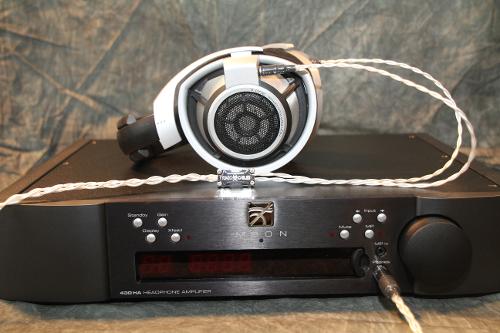
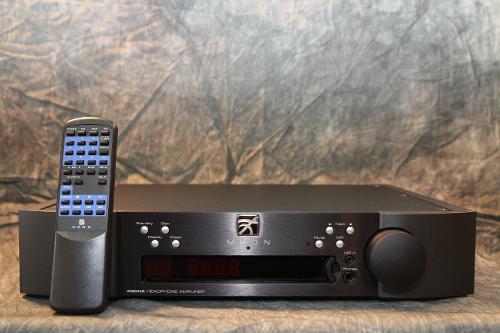
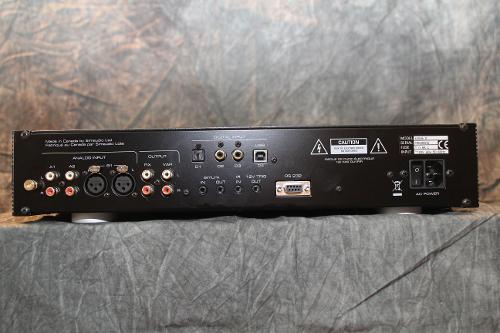
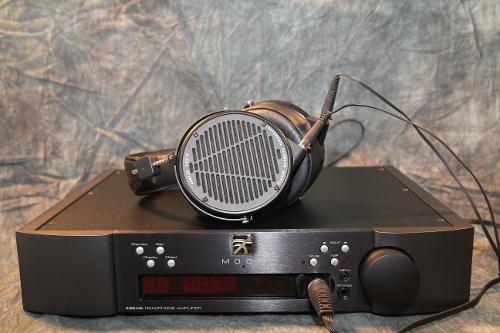



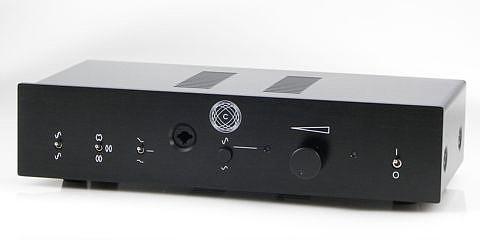
![color]](http://headphone.guru/wp-content/uploads/2014/09/classicblackfront480.jpg[color=rgb(204, 0, 0)][/color])
![color]](http://headphone.guru/wp-content/uploads/2014/09/classicinsideb480.jpg[color=rgb(204, 0, 0)][center][/center][/color])
][/color])
][center][/center][/color])
][/color])
][/color])

![color]](http://headphone.guru/wp-content/uploads/2014/12/Geek_Pulse_LPS.jpg[color=rgb(204, 0, 0)][/color])
][center][/center][/color])
][/color])
][/color])
][/color])
][/color])
][/color])
 It is a great unit. I will be glad to have it back!
It is a great unit. I will be glad to have it back!